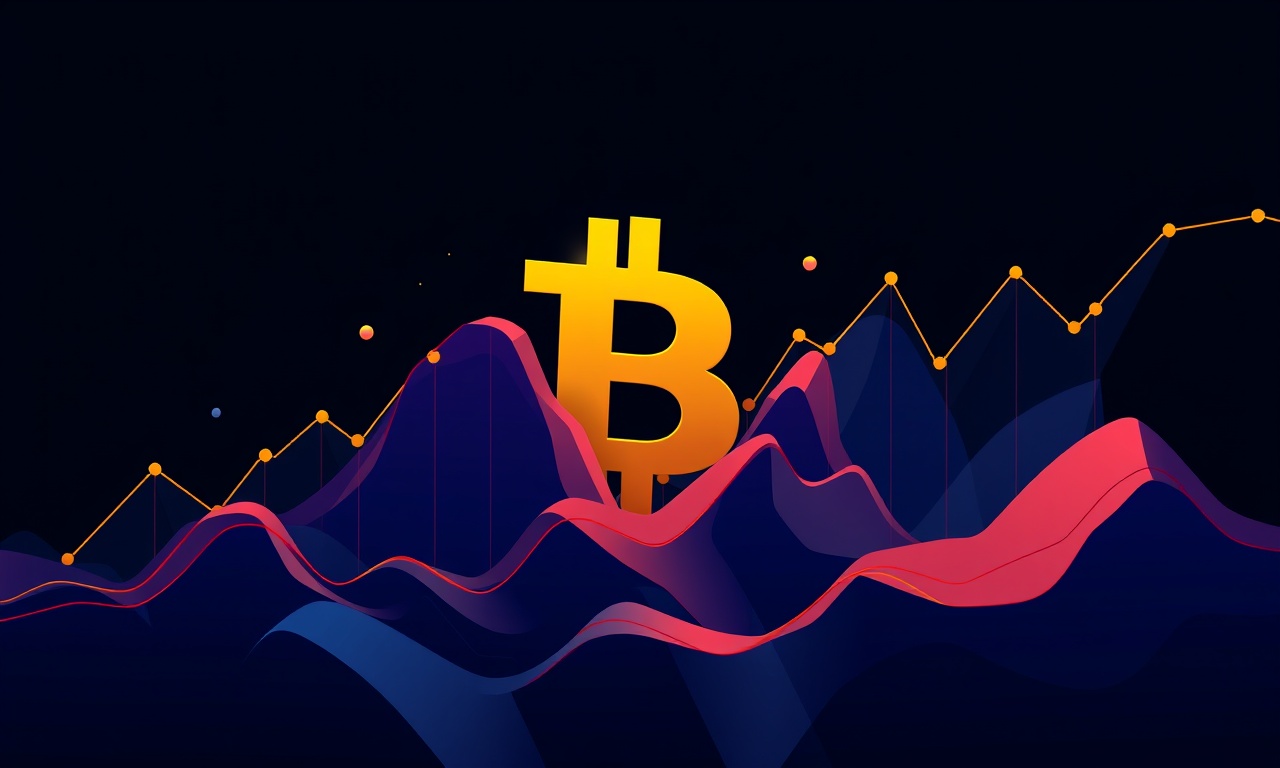Mastering DeFi Portfolio Risk: Metrics, Optimization, and Drawdown Recovery

Last week I was scrolling through the new DeFi bulletin board in Lisbon, and a sudden pull‑back in a popular liquidity pool caught my eye. I paused, watched the price slip, and wondered: “If the market takes a tumble tomorrow, how do I keep my portfolio breathing?” A good place to start is reading about risk metrics for decentralized assets: from loss peaks to rebound strategies. That question has become a compass for so many of us who move through the fast‑moving world of decentralized finance. Let’s zoom out and talk about what it really means to hold risk in this new landscape, how to measure it, and when a comeback feels reasonable.
Why DeFi Needs its own Risk Lexicon
In traditional finance you’d talk about portfolio variance, beta, and Sharpe ratio. In DeFi we talk about impermanent loss, TVL, and smart‑contract exposure. The foundations are the same, but the tools feel different. Imagine a garden – the plants are your tokens, the soil is the market conditions, and the gardener – you – must decide how much to water, prune, or move certain species.
When we say volatility, think of the temperature swings in Lisbon during spring; it’s the normal daily highs and lows. Think of maximum drawdown (MDD) as the deepest trench you can dig in the soil; it’s the biggest drop from a peak to a subsequent trough, measured over a defined period. When that trench is deep, water (your capital) can be hard to recover. The recovery time tells you how long it might take to climb back out.
DeFi adds two more “plants” to our garden. First is impermanent loss (IL) – the temporary price difference when you provide liquidity to an automated market maker. Second is smart‑contract risk – the risk that the code you trust fails, as when a flash loan exploit takes a slice of a pool. Both IL and contract risk distort the usual volatility picture, making risk metrics a bit more colorful.
Seeing the Whole Ecosystem
Let’s glance at our garden and list the components that matter to risk:
- Asset volatility – the price swings of each token.
- Correlation matrix – how close or distant different assets move together.
- Liquidity risk – the possibility of slippage or being stuck in a pool.
- Smart‑contract safety – audit scores, gas usage, token locking.
Plotting these together in a heat map (like the one we often see on Dune Analytics) gives a first approximation of what to expect. It’s a living picture; the numbers shift every 15 minutes. That’s why we should keep an eye on updated metrics.
Calculating Drawdown Metrics – The Practical Walkthrough
When a trader in Lisbon told me they “don’t look at MDD,” it made me think of how many people overlook the depth of a market slide. Here’s how you can check it without a PhD:
- Collect price data – daily close prices for each asset, stored in a spreadsheet or Python dataframe.
- Compute cumulative returns –
C_n = C_{n-1} * (1 + r_n)wherer_nis the daily return. - Build a running peak – at each day, set the peak as the maximum cumulative value observed so far.
- Derive drawdown –
DD_n = (C_n - Peak_n)/Peak_n. Convert to percentage. - Pull out MDD – simply the most negative drawdown over the window.
- Recovery time – count days from the MDD trough until the cumulative return surpasses the peak that preceded the trough.
You can wrap this into a script or use a DeFi dashboard that already does it. Many automated protocols expose these stats via API.
The main lesson? Your maximum drawdown and recovery time are not static; they vary across different market conditions. A 10% daily volatility in USDC/ETH might produce a 30% MDD during a bear wave, but the same volatility could result in only a 5% MDD during a sideways market.
Bringing Optimization into the Mix
Risk metrics only tell half the story. We need to plan how to deploy our capital across the ecosystem. A classic way is to use mean‑variance optimization (MVO), but DeFi’s peculiarities push us to tweak the framework:
- Use risk parity – equalize the contribution of each asset (or liquidity pool) to overall volatility. In practice, this is like ensuring no single plant dominates the garden’s water usage.
- Include IL adjustments – calculate expected IL for each pool over a holding horizon and add it to the asset’s risk contribution.
- Cap correlation – DeFi pairs can have high or low correlations. A hard cap like 0.5 prevents a single event (e.g., a governance failure) from collapsing a cluster of correlated tokens.
Here’s a simplified workflow:
1. Estimate expected returns (e.g., average APY).
2. Calculate covariance matrix of returns.
3. Adjust for IL and smart‑contract risk.
4. Solve for weights that minimize portfolio volatility with a target return.
5. Rebalance when volatility deviates by >10% from target.
The outcome is a diversified, risk‑aware allocation that keeps your garden thriving even when a single plant falls.
If you want a deeper dive into the mechanics of this approach, check out how to use drawdown analysis in DeFi portfolio optimization for a mathematical perspective: DeFi portfolio optimization with drawdown analysis.
Recovering From a Drawdown – It’s More About Time Than Timing
The phrase “sell low, buy high” gets a lot of love, but it’s often impractical for DeFi newcomers. Markets move in waves, and attempting to time recoveries can lead to missed opportunities and worse anxiety.
What matters more is patience. Think of the recovery as a plant regrowth after a frost. The garden may feel barren for weeks, but it will recover if the fundamentals (liquidity, governance health, token utility) remain sound.
Strategies for smoother recoveries:
- Hold a portion in stablecoins – an 8–10% stablecoin buffer can provide liquidity to rebalance without selling under pressure.
- Use leveraged vaults sparingly – overleveraged positions can amplify losses. Only use them for short, high‑conviction trades.
- Establish stop‑or‑limit orders on the DEX you use – some routers now allow you to set an exit trigger. This prevents the worst slide in a bursty market.
- Automate rebalancing – platforms like Set Protocol or Alpha Homora can automatically rebalance your farm when a threshold is reached.
When you notice a drawdown, take a breath. Ask: Does the fundamental reason for investment still exist? If yes, stay; if no, consider exiting or reallocating. For a broader perspective on navigating portfolio losses and recovery, you might find this lens useful: Navigating decentralized risk: a new lens on portfolio losses and recovery.
The Psychological Backbone – Fear vs. Discipline
Risk metrics and optimization are tools, not oracles. They cannot shield you from market panic. When a meme coin drops 70%, you’ll feel a rush of fear. A good habit is to step back and check the MDD and recovery time, not just the headline.
When the drawdown is within your pre‑set tolerance and you see a reasonable recovery path, let the numbers guide you. When it goes beyond your tolerance, it’s time to act. This mental discipline turns a garden into a garden of resilience rather than chaos.
Real‑World Snapshot: A Lisbon‑Based DeFi Portfolio
Let me share a quick story that happened to a friend of mine, Marta, who runs a small café in Alfama.
Marta had earmarked 5% of her savings—about €3,000—into a balanced DeFi portfolio. Her allocation was:
- 30% stETH (Ethereum staking reward token)
- 25% AMPL (Stablecoin)
- 20% CRV (Curve LP token)
- 15% AAVE (Lending protocol)
- 10% Uniswap V3 ETH/USDC pool
Three months later, during a regulatory announcement, she saw the portfolio take a 35% drawdown. She checked the metrics, saw the MDD was 35% and the recovery time had historically taken about 90 days. Her emotional response was shock, but she remembered the agreed tolerance of 50% and the fact that her stablecoin buffer could cover emergency withdrawals. She chose not to sell.
Over the next week, the market started to recover. She bought a small portion of CRV at a lower price, thereby improving the portfolio’s risk profile. By month six, her portfolio was back to 20% above its original value.
Her tale reminds us that while numbers matter, a calm hand and pre‑planned tolerance levels are the real anchors.
A Quick Checklist for Every DeFi Enthusiast
- Know your maximum drawdown tolerance – ask yourself, “What drop am I willing to absorb?”
- Monitor recovery times – check historical recovery periods for assets you hold; use them as a guide.
- Regularly rebalance – aim for a volatility target and auto‑rebalance when deviation exceeds 10%.
- Have a stablecoin bucket – at least 5–10% as a liquidity buffer.
- Stay informed about project fundamentals – audit updates, governance changes, liquidity updates.
- Keep emotional discipline – stop‑losses and risk parameters should guide your actions, not fear.
Final Grounded Takeaway
The key to surviving a downturn in DeFi is not so much about predicting the next sharp drop but about crafting an ecosystem of resilience: maintain a clear MDD limit, add a modest stable‑coin cushion, and rebalance promptly. Think of your portfolio as a garden that will weather a storm if you hold the right plants, water appropriately, and don’t let panic dictate the harvest time. When you return to your charts, remember: “Markets test patience before rewarding it.” Let patience be your garden’s mulch.
.png)
JoshCryptoNomad
CryptoNomad is a pseudonymous researcher traveling across blockchains and protocols. He uncovers the stories behind DeFi innovation, exploring cross-chain ecosystems, emerging DAOs, and the philosophical side of decentralized finance.
Discussion (9)
Join the Discussion
Your comment has been submitted for moderation.
Random Posts

Designing Incentives and Bonding Mechanisms for Treasury Management
Designing incentives and bonding mechanisms turns capital flow into a thriving treasury, aligning rewards with risk to attract liquidity and build a resilient DeFi protocol.
4 months ago

Mastering MEV in Advanced DeFi, Protocol Integration and Composable Liquidity Aggregation
Discover how mastering MEV and protocol integration unlocks composable liquidity, turning DeFi from noise into a precision garden.
3 months ago

Proxy Implementation Risks In Smart Contracts And Their DeFi Impact
Proxy contracts give DeFi upgrades, but hidden pitfalls can trigger exploits and wipe funds. Learn the top risks, how they spread, and practical defenses for developers, auditors, and users.
8 months ago

Advanced DeFi Analytics From On Chain Metrics to Predictive Models
From raw on, chain data to predictive models, discover how to turn DeFi activity into actionable insights through ingestion, cleaning, feature engineering, cohorting, and ML.
1 month ago

Deep Dive Into Protocol Integration for Advanced DeFi Liquidation Bots
Discover how advanced DeFi liquidation bots convert protocol quirks into profit by mastering smart-contract interfaces, fee rules, and market timing to capture undercollateralised opportunities.
5 months ago
Latest Posts

Foundations Of DeFi Core Primitives And Governance Models
Smart contracts are DeFi’s nervous system: deterministic, immutable, transparent. Governance models let protocols evolve autonomously without central authority.
2 days ago

Deep Dive Into L2 Scaling For DeFi And The Cost Of ZK Rollup Proof Generation
Learn how Layer-2, especially ZK rollups, boosts DeFi with faster, cheaper transactions and uncovering the real cost of generating zk proofs.
2 days ago

Managing Debt Ceilings and Stability Fees Explained
Debt ceilings cap synthetic coin supply, keeping collateral above debt. Dynamic limits via governance and risk metrics protect lenders, token holders, and system stability.
3 days ago
